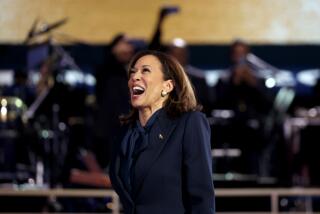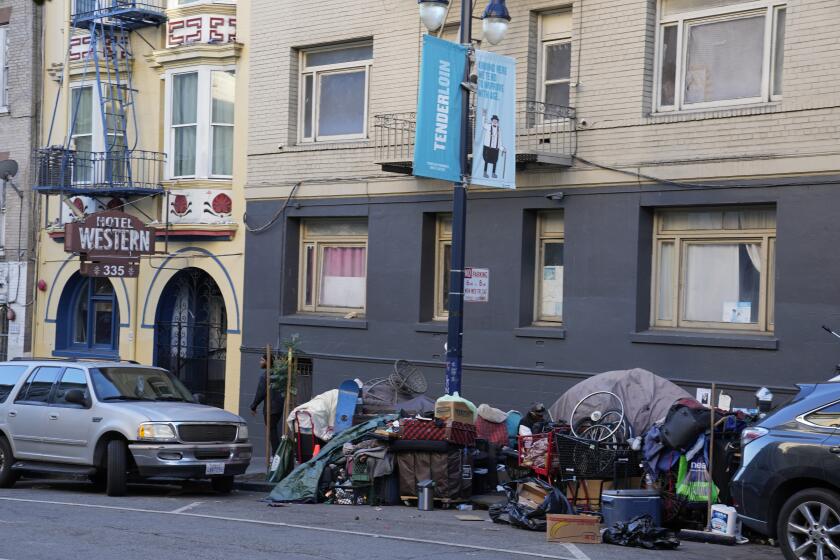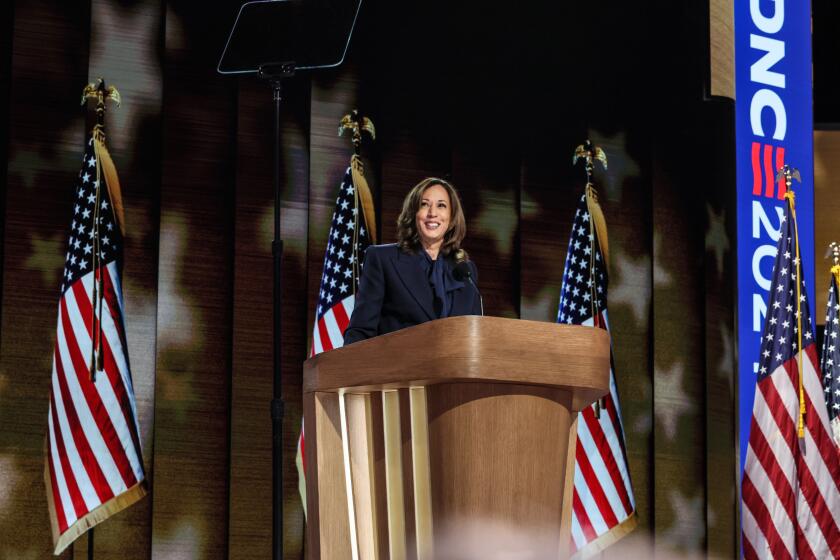Suburbs’ Political Clout Stacks Deck Against Cities
Suburban political power has stacked the deck against attempts by urban lawmakers to oppose Gov. George Deukmejian’s budget proposals to limit and reduce medical aid and welfare benefits.
A clear example of that is Los Angeles County, where the state’s biggest collection of suburbs--most with conservative voting histories--ring an urban area, the city of Los Angeles, where large numbers of poor who are dependent on aid payments and public hospitals and clinics are concentrated.
The numerical dominance of suburban lawmakers in the Legislature assumed new importance Wednesday as such Democratic urban legislators as Sens. David A. Roberti and Diane Watson of Los Angeles prepared to oppose the Republican governor’s budget proposal.
They will do so in a long process in which many factors will play a part--disputes between cities and counties; the power of Democratic leaders of the Senate and Assembly; the lame duck status of the governor, and even drug company lobbyists fighting Administration proposals to reduce Medi-Cal prescription drug payments.
But two political scientists said the impact of suburban power on the budget process is a graphic illustration of how California’s changing political demography--with new suburbs overpowering old cities--is affecting state policies and legislative politics.
“This is just one factor in a complex process,” said Alan Heslop of the Rose Institute, a Claremont-McKenna College political think tank. But he said it is an important part in the playing out of the budget debate.
Bruce Cain, a Caltech political scientist, said, “These suburban legislators reflect their constituents on issues.” And these voters have been hostile in the past to more welfare spending, he said.
“I reject the idea they are selfish people,” said Assemblyman Tom Hayden, (D-Santa Monica). “But they are skeptical. They are like K mart shoppers. They want to know what will be done with their tax dollars.”
The Los Angeles County legislative delegation, largest in Sacramento, is dominated by senators and Assembly members from suburban areas by almost a 2-1 margin.
Adding to suburban power is the makeup of the Los Angeles County Board of Supervisors, which operates the state-federal-county financed welfare and health programs. Three of its five members are conservative suburbanites who have little enthusiasm for doing battle in Sacramento for welfare recipients. That makes it unlikely that the Sacramento delegation will get sharp prodding from the County Hall of Administration in Los Angeles.
Cain said that population growth in the county from the middle class on up has been in the suburbs, and these are the people most likely to vote. Urban population growth has been from the poor, for the most part, who tend to vote less.
Although Republican registration is increasing in suburban areas, party lines are not always determining factors on such cutting-edge issues as welfare. Democratic Assemblyman Richard Katz of Sepulveda represents a prosperous middle-class San Fernando Valley district around Cal State Northridge where Democrats hold a registration lead of about 20%.
But they are not especially loyal to a party identified with liberal policies such as the Great Society, generous welfare payments and civil rights legislation. While Democratic U.S. Sen. Alan Cranston received 53% of the Katz district vote in 1986, President Reagan, who rose to fame as a welfare critic, overwhelmingly carried the area when he was reelected in 1984.
Thus Democrat Katz, while a close ally of liberal Assembly Speaker Willie Brown, is cautious in discussing the budget. Asked about the health and welfare parts of the budget, he said, “I don’t know yet.” Keenly aware of the concerns of his constituents, he said, “I have to find out why Cal State Northridge didn’t get some of the buildings it was supposed to get.”
Heslop said the growth of conservative suburban political power in the Legislature would have been even greater if it had not been for Democratic reapportionments of the early 1980s.
“Nobody can look at the statewide electorate and not be impressed by its conservative, anti-tax bias,” Heslop said. “The presidential election, the gubernatorial election, the last Senate election (Republican Sen. Pete Wilson’s reelection) put a different cast on the state than the legislative and congressional elections.”
Control by Democrats
He referred to the fact that Democrats maintained control of the Legislature and of the congressional delegation, whose districts were also drawn by Democrats.
The political arithmetic is expected to force the liberal Democratic leadership in the Senate and Assembly to wage their fight against the Deukmejian cuts in subtle, intricate ways.
For example, Katz noted that Speaker Brown has put a large number of urban Democrats on the Assembly Ways and Means Committee, that house’s budget-writing body. “The committee has enough urban folks so that the urban areas are represented,” he said.
And, it takes a two-thirds majority of the 80-member Assembly and 40-member Senate to pass a budget, where most bills require only a simple majority. That ability to deny a two-thirds edge enhances the power of the outnumbered urbanites.
Force Concessions
With that leverage, Katz said, liberals could force concessions from Deukmejian and legislative Republicans. In exchange for going along with his proposal to deny cost-of-living increases for welfare recipients, Katz said, liberals could demand strong support from him and the conservative Republican lawmakers for repealing the Gann limit on state spending. Deukmejian has already said he is willing to discuss it.
But political scientist Cain said the conservative constituencies of Democrats such as Katz limit the ability of liberals such as Speaker Brown to fight Deukmejian. Rank-and-file Democratic lawmakers fear too liberal of a leadership, he said.
“They (the leaders) have to deal internally with these divisions (between urban and suburban Democrats) because part of the price of staying in power is having a homogenous caucus,” Cain said. “Underlying (the debate over) these cuts are the fundamental values that divide them (Democrats).”
More to Read
Get the L.A. Times Politics newsletter
Deeply reported insights into legislation, politics and policy from Sacramento, Washington and beyond. In your inbox three times per week.
You may occasionally receive promotional content from the Los Angeles Times.






